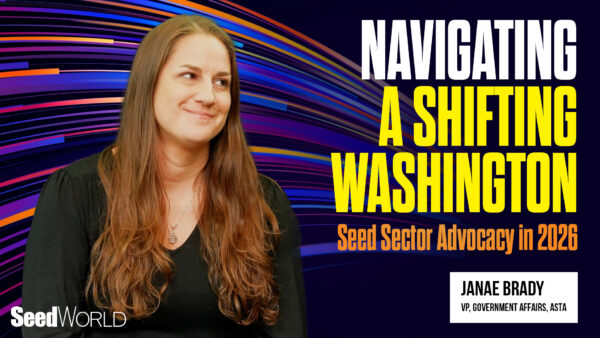Canada is known as a nation for our vast agricultural landscapes and advancements in farming practices with a seed certification system we self-describe as a model to emulate. But there is delusion in how we describe our seed system, and I am losing faith that our regulatory modernization process will address a fundamental issue. Lying beneath the surface of our seemingly robust seed framework is a broken governance structure in dire need of repair.
Over the past few years, seed industry stakeholders alongside producer groups have worked with CFIA to review and discuss issues with our current Seeds Regulations and our seed standards. Most of the work we have done has been an exercise in updating and maintenance. The discussions about how we can modernize our seed system, such as our conversations regarding the use of incorporation by reference as a tool to help make our regulatory system more responsive, have been few.
But in all our discussions, the SRM Working Group and Canadian Food Inspection Agency have not contemplated and resolved a path forward to repair the antiquated, inequitable governance structure of our current seed system. Since CFIA did not share this major shortcoming with the task teams before the work of the task teams started, the task teams have made several uninformed recommendations. Now we see this issue manifested in the current (Winter 2024) CFIA stakeholder consultation survey.
The model for governance for our current seed system was established about 120 years ago — yes, 120 years ago — when our parliament passed the Seed Control Act of 1905 and around that same time the government delegated the responsibility of setting our seed crop production standards to the Canadian Seed Growers’ Association (CSGA). This was an incredible part of our history and orchestrated by a visionary group of seed growers, scientists, and government officials.
But that was an appropriate solution for a time in our history when the only stakeholders in the seed industry were farmers who were producing and selling seed. With 120 years of evolution in the seed industry, consider the diversity of the stakeholders in our seed industry today: seed labs and seed analysts, registered seed establishments and their personnel, seed growers, plant breeders, seed brokers, seed distributors, seed retailers, seed-applied technology companies, seed equipment companies, ASCIS and crop inspectors, producers, and producer groups.
Despite the multitude of stakeholders involved, our current governance model includes only one additional stakeholder group beyond the original framework established over a century ago.
This was on the minds of our SRM Working Group members when they asked CFIA to conduct a benchmarking exercise of the seed certification systems in other countries. In early 2023, CFIA commissioned JRG Consulting Group to examine seed systems in other countries to gain a comprehensive understanding of how those systems operate and to assess their effectiveness.
With feedback from the SRM Working Group members, CFIA selected six countries for the study: the United States, the Netherlands, New Zealand, the United Kingdom, the European Union (EU), and Uruguay. One of the undeniable findings from this benchmarking study was that while each system has unique features, in most cases the seed value chain is responsible for coordinating their seed system.
From his interview with John Groenewegen from JRG Consulting Group, Marc Zienkewicz reported in his Seed World article in August of 2023 that, “This collaborative approach, where industry bodies identify changes and drive consensus, empowers the seed systems to adapt quickly while maintaining compliance with international standards.”
No surprise. John Groenewegen’s findings are consistent with my years of experience delivering compliance services in multiple certification schemes: seed certification, food safety certification, organic certification, and sustainability verification. At the apex of any scheme (seed, sustainability, organic, food safety…) is a governance body responsible for overall strategic direction, policy formulation, and decision-making. This governance body encompasses representatives from all key stakeholders.
To modernize Canada’s seed system and correct the inequity in the outdated governance model, I can easily envision a responsible body, at the apex of our seed system, made up of Canada’s seed industry stakeholders, industry associations, audit/inspection/certification bodies, producer groups, relevant experts, and government representatives with the mandate to advise the government on strategic direction and policy formation, and make recommendations on changes to standards and regulations.
This in essence is the concept for the Inclusive Seed Standards Body (ISSB), and why we see it as an important concept for the future of our seed and grain industries.
—Roy van Wyk is client and intellectual property services director for Seeds Canada
EDITOR’S NOTE: The ISSB concept is coming up at Seeds Canada’s Annual Conference in Edmonton, Alta. in July. Dr. Erin Armstrong will be presenting her findings and recommendations on this proposal and outlining a model for setting up an ISSB, including mandate, scope, representation, structure, and governance, according to Seeds Canada’s agenda for the meeting. You can read Armstrong’s recent Giant Views column about the ISSB concept by clicking here.











